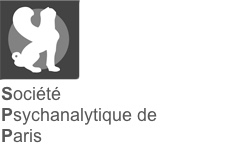| Type de document : | Article : texte imprimé |
| Titre : | La honte entre corps et âme (2004) |
| Auteurs : | / Guy SAMAMA |
| Dans : | Sigila (n° 14, 2004) |
| Article en page(s) : | pp. 153-165 |
| Langues: | Français |
| Mots-clés : | Honte |
| Résumé : |
Contrairement à ce qu’on croit spontanément, la honte n’est pas toujours liée au sentiment d’une faute, non plus qu’à une condition de publicité. Il existe au moins deux formes de la honte : l’une est d’après l’acte, consécutive à une action, ou bien à un comportement, jugés, à tort ou à raison, mauvais et répréhensibles ; l’autre est d’avant l’acte, une honte d’avant la honte ; elle s’apparente à une disposition plutôt qu’à une activité, et traduit un désaccord, une dissonance entre l’âme et le corps. C’est cette honte synthétique et a priori que nous avons cherché à comprendre, en nous adossant d’un côté sur le fonds grec, de l’autre sur deux drames : Pelléas et Mélisande de Maeterlinck et Ivanov de Tchekhov.
-- Abstract: Contrary to the general conception, shame is not always linked to a bad act, nor to the act being discovered. There are at least two forms of shame : one, after the act, consecutive to an action or a behaviour, rightly or wrongly judged, as bad or reprehensible : and the other, before the act, a form of shame preceding shame for the act. The latter comes closer to a disposition rather than an activity and translates a disagreement, a dissonance between the body and the soul. It is this synthetic, a priori form of shame that we have tried to understand, basing our study first on Greek resources and then on two dramatic works : Pelléas et Mélisande by Maeterlinck and Ivanov by Tchekhov. |
Exemplaires (1)
| Code-barres | Cote | Support | Localisation | Section | Disponibilité |
|---|---|---|---|---|---|
| 20010171 | K07-5 | Revue | BSF Paris | ψ Réserve : Périodiques | Consultation sur place |




